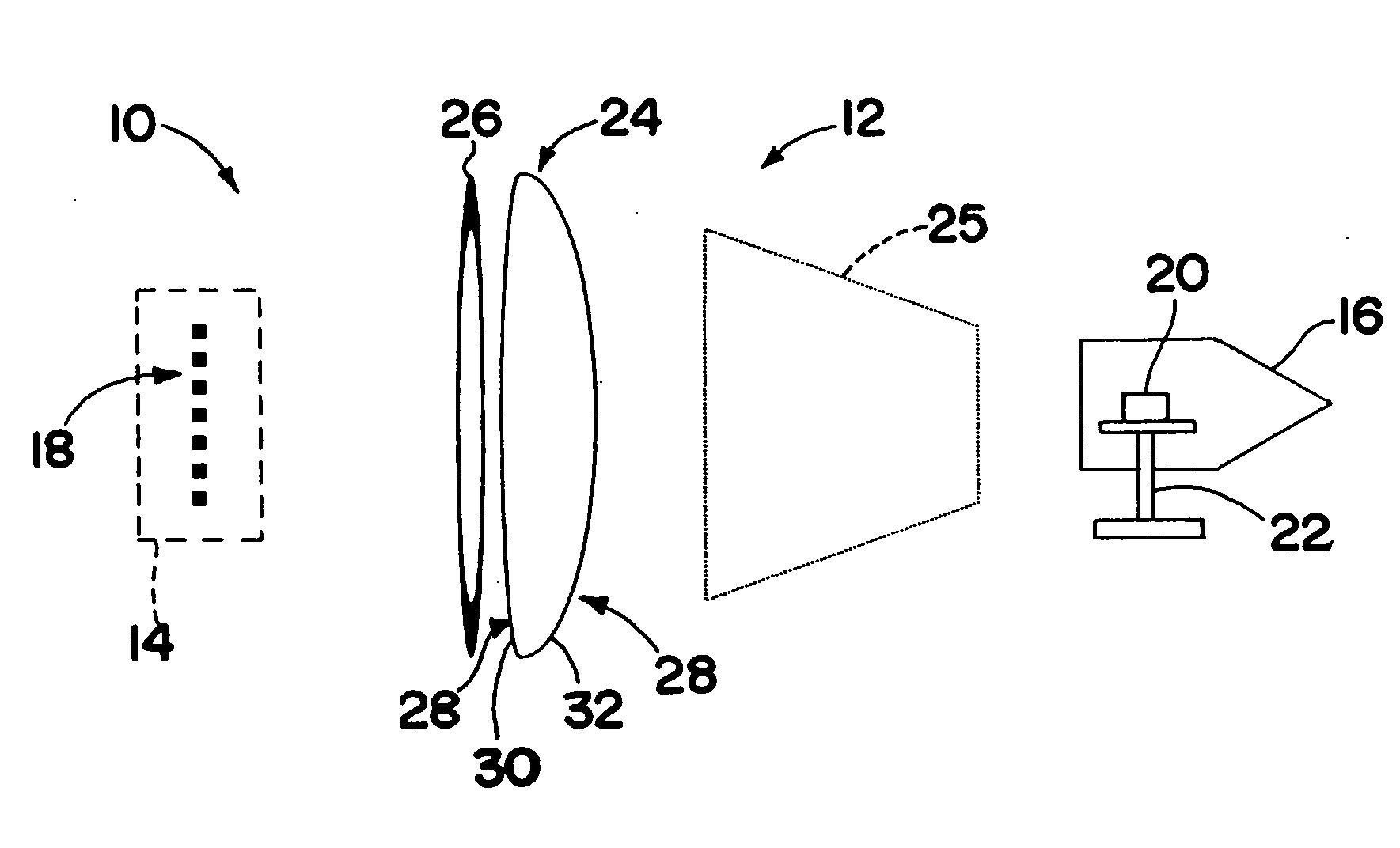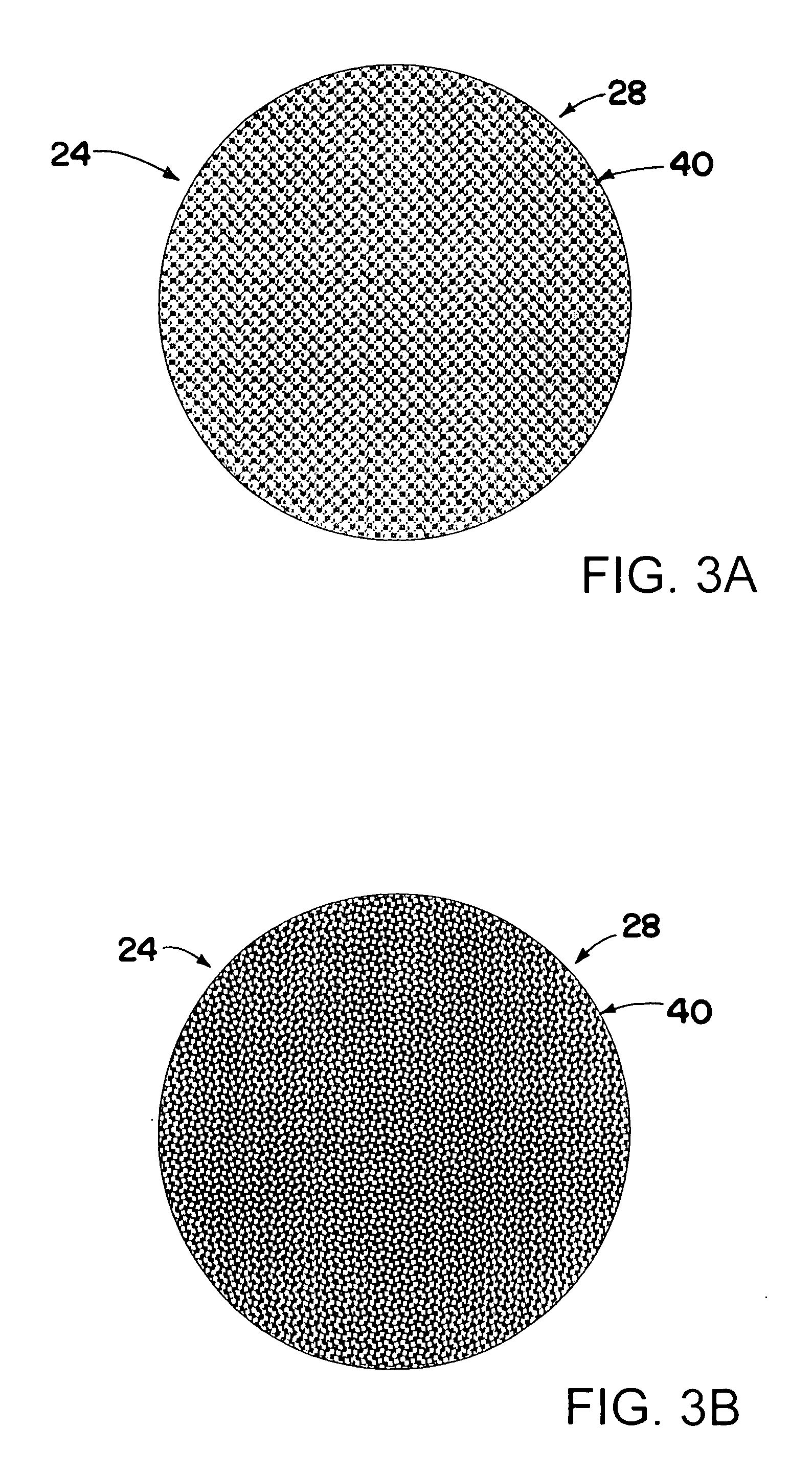Refractive compact range
a compact range and refractive technology, applied in the direction of antenna radiation diagrams, instruments, antennas, etc., can solve the problems of limiting the field of regard for the sensor, requiring a large interior space, and requiring a large quantity of radar-absorbing materials, so as to reduce the destructive diffractive interference pattern
- Summary
- Abstract
- Description
- Claims
- Application Information
AI Technical Summary
Benefits of technology
Problems solved by technology
Method used
Image
Examples
Embodiment Construction
[0023]A radio-frequency-device test range includes a physical space having a source zone for placing an antenna or array of antennas, and a test zone for placing a sensor or other device to be tested. A lens and an apodizer are placed in the physical space between the source zone and the test zone. The lens serves to collimate the energy emanating from the antenna / antenna-array toward the test zone. The lens may be an aspheric lens. The lens may have a surface treatment, such as an anti-reflective coating or a surface pattern, on one or both surfaces. The apodizer functions to keep energy from diffracting off the edge of the lens and getting into the field of view (the test zone). The apodizer may be a resistance (R-Card) fence. The sensor or other device to be tested may be placed on a moveable mount to allow it to be moved, to simulate relative movement of the device and a radio frequency source, such as an antenna. The test zone for the system may have at least a 30 degree field ...
PUM
 Login to View More
Login to View More Abstract
Description
Claims
Application Information
 Login to View More
Login to View More - R&D
- Intellectual Property
- Life Sciences
- Materials
- Tech Scout
- Unparalleled Data Quality
- Higher Quality Content
- 60% Fewer Hallucinations
Browse by: Latest US Patents, China's latest patents, Technical Efficacy Thesaurus, Application Domain, Technology Topic, Popular Technical Reports.
© 2025 PatSnap. All rights reserved.Legal|Privacy policy|Modern Slavery Act Transparency Statement|Sitemap|About US| Contact US: help@patsnap.com



